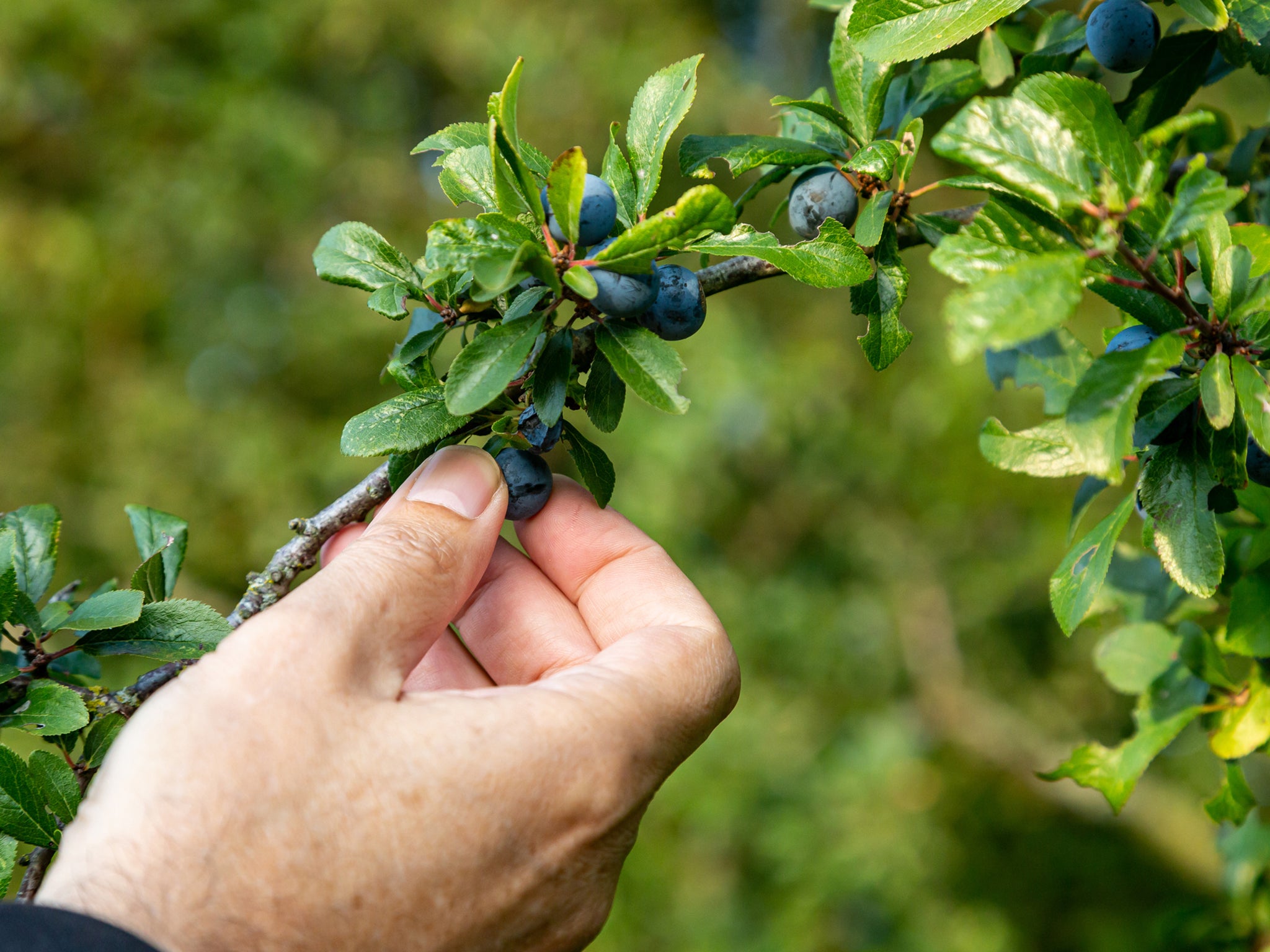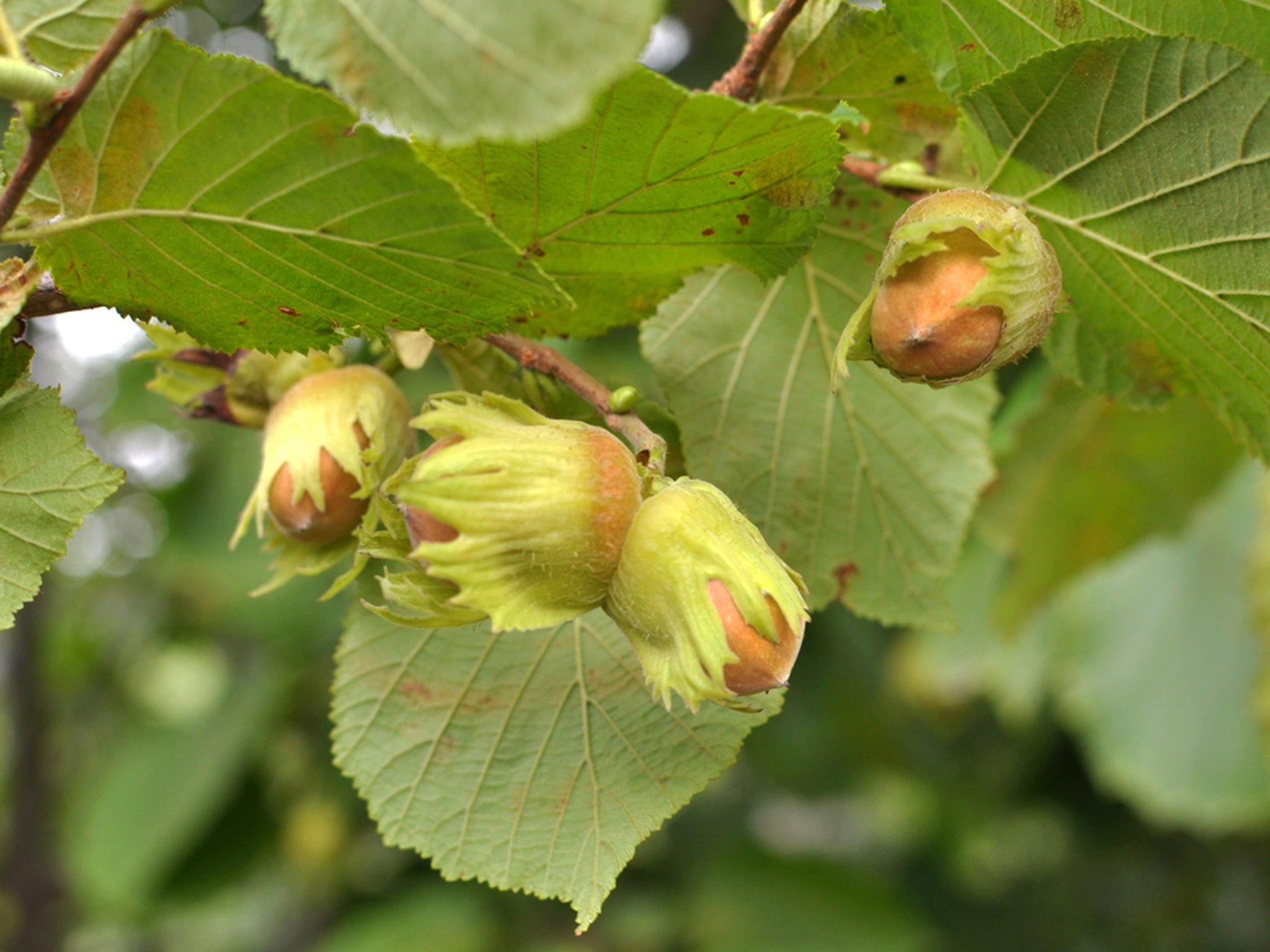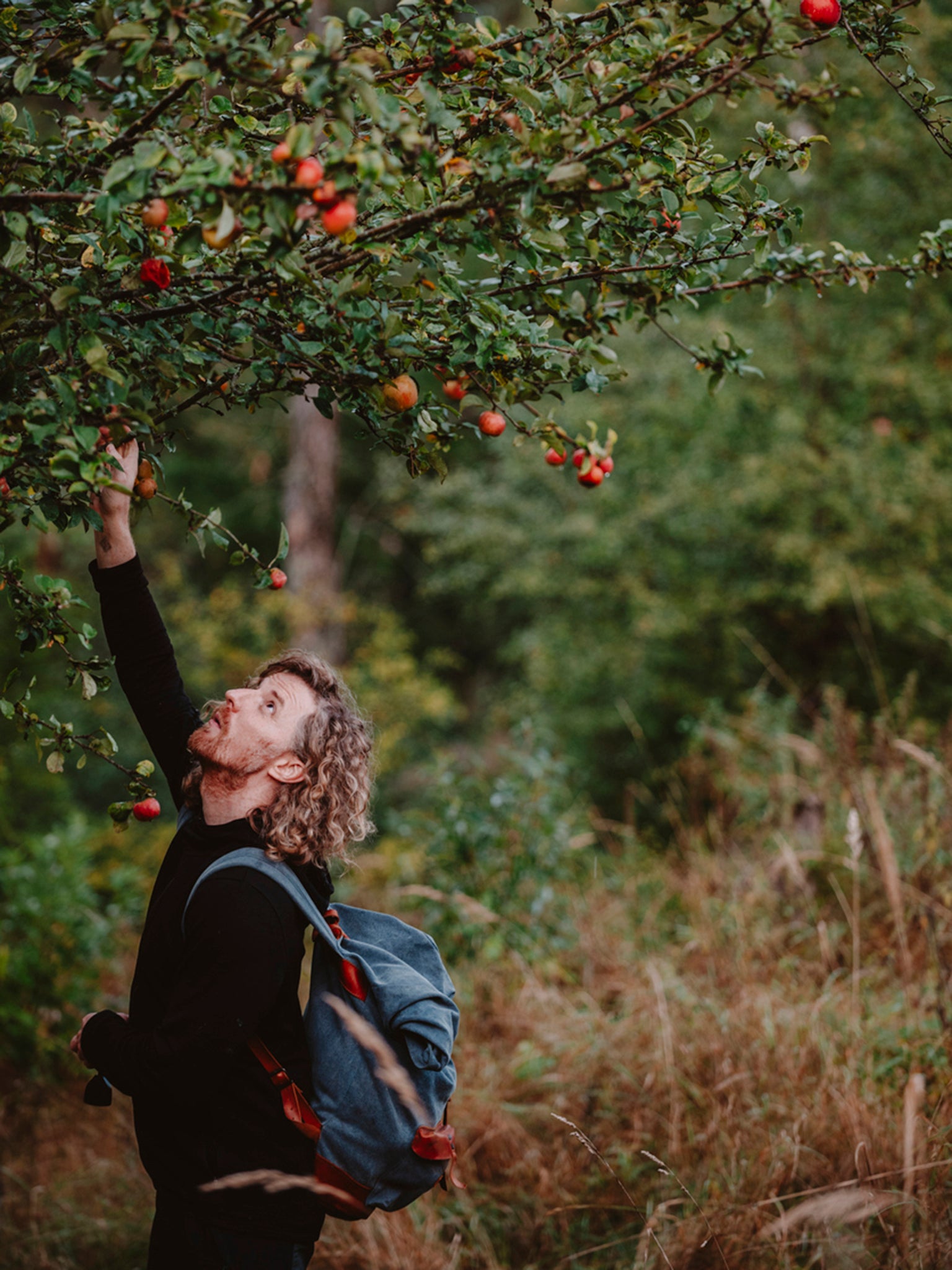The Independent's journalism is supported by our readers. When you purchase through links on our site, we may earn commission.
November foraging guide: The rules to follow, best foods to find and how to cook them
Foraging for wild foods is a great way to add some flavour to your autumn walks, as long as you follow the rules and know what to look for

Your support helps us to tell the story
From reproductive rights to climate change to Big Tech, The Independent is on the ground when the story is developing. Whether it's investigating the financials of Elon Musk's pro-Trump PAC or producing our latest documentary, 'The A Word', which shines a light on the American women fighting for reproductive rights, we know how important it is to parse out the facts from the messaging.
At such a critical moment in US history, we need reporters on the ground. Your donation allows us to keep sending journalists to speak to both sides of the story.
The Independent is trusted by Americans across the entire political spectrum. And unlike many other quality news outlets, we choose not to lock Americans out of our reporting and analysis with paywalls. We believe quality journalism should be available to everyone, paid for by those who can afford it.
Your support makes all the difference.As the UK puts on their walking boots and winter coats, now is the time to make the most of your autumn walks. So here’s some advice on how to forage in the UK, the rules to follow and the best things to look for in November.
Foraging for wild foods is a great way to add some flavour to your outdoor adventures.
Nature has an array of ingredients that are free for UK walkers. As long as you are in a public space or have the landowner’s permission, foraging in the UK is a great way to explore all the tastes and flavours that Mother Nature has to offer.
But there are some rules you must follow in order to forage responsibly in the UK.
UK foraging rules
1. Make sure you know what you are picking.
2. Seek permission from landowners if you are on private property.
3. Only pick for personal consumption.
4. Only collect from an abundant source.
5. Don’t dig up or remove plants.
6. Avoid roadsides and low-to-ground spaces where dogs are walked.
It is important to start simple when foraging and only pick or eat something if you are 100 per cent certain of what it is. Choosing to forage recognisable fruits such as brambles is a great way to start. It is also a good idea to cross-reference multiple foraging books if you are unsure of what you are picking.
One thing to note is that the food you can forage will change throughout the year. With this in mind, we have revealed the best things to pick in the upcoming months, and how to cook them.
The best things to forage in autumn
Sloes
As the leaves fall from the trees in autumn, sloe berries found on blackthorn plants begin to ripen and become a rich bluey-purple colour. They appear all over the UK, but you’ll need to be quick to beat the hordes of gin fanatics looking to pick a few for this year’s vintage of homemade sloe gin.
Some say you shouldn’t pick a sloe until after the first frost when using them for gin, as this is what breaks the skin and allows the berry to infuse. However, 24 hours in the freezer will mimic the frost so feel free to pick away as soon as the sloes turn ripe.
Sloe gin recipe
Sloe gin is a delicious and fruity liqueur that’s easy to make at home. It’s made from sloe berries, which are small, tart fruits related to the plum. Sloe gin is a popular choice for cocktails, such as the classic sloe gin fizz. Here’s a simple recipe for homemade sloe gin.
Ingredients:
500g sloe berries
250g granulated sugar
750ml gin
Method:
Harvest or source sloe berries: Sloe berries are typically in season in late September and October. You can pick them yourself if you have access to sloe bushes, or you can often find them in farmers’ markets or specialty food stores. Make sure the berries are ripe and have a deep, dark colour.
Prick the sloe berries: Before you begin, wash and thoroughly dry the sloe berries. Prick each berry with a fork or a toothpick. This helps release the flavour and colour of the berries into the gin. You can also freeze the berries for a day or two before using; this has the same effect.
Prepare the gin mixture: In a clean, sterilised glass jar or container, add the pricked sloe berries and the granulated sugar. Pour the gin over the berries and sugar.
Seal the jar: Ensure the container has an airtight seal. You can use a lid or a piece of plastic wrap secured with a rubber band. Give the mixture a good shake to dissolve the sugar.
Store in a cool, dark place: Place the container in a cool, dark location, such as a pantry or cupboard. Sloe gin needs time to infuse and develop its flavour, so let it sit for at least 3 months, and ideally up to a year. You can give it a gentle shake every couple of weeks to help the flavours meld.
Strain and bottle: After the desired infusing time has passed, strain the sloe gin through a fine-mesh sieve or a piece of muslin cloth into a clean, sterilised bottle. Discard the leftover sloe berries.
Enjoy: Sloe gin can be sipped on its own, mixed with tonic water, or used in cocktails. You can also store it for an extended period, and its flavour will continue to improve with time.
Keep in mind that sloe gin is sweet, so you can adjust the sugar to taste. The longer you let it infuse, the stronger the flavour will be. Experiment with different infusing times to find your preferred balance of sweetness and sloe berry flavour.
Hazelnuts

Hazelnuts are an autumnal classic. When you notice the leaves of a nearby hazel tree change in colour around September to October, look out for the ripe nuts. You’ll know they’re ready when they’re a lovely brown shade and the paper-like wrapping peels away from the nut easily. Alternatively, pick them when they’re still green and ripen them at home in a warm, dark space.
Hazelnut and roasted beetroot salad
Foraging for hazelnuts can be a rewarding experience, and you can use these delicious nuts in various recipes. Here's a simple and tasty recipe for hazelnut and Roasted beetroot salad. This dish combines the earthy flavours of roasted beets with the crunch and nutty taste of hazelnuts, creating a delightful and visually appealing salad.
Ingredients:
For the salad:
4 medium-sized beetroots (approx 400-500g), both red and golden if available
60-70g (½ cup) fresh hazelnuts
100-120g (4 cups) mixed salad greens (eg rocket, spinach, or your choice)
25-30g (¼ cup) crumbled goat cheese (optional)
30-40g (¼ cup) red onion, thinly sliced
Olive oil for roasting and dressing
Salt and black pepper to taste
For the hazelnut dressing:
2 tbsp hazelnut oil (you can also use extra virgin olive oil)
1 tbsp balsamic vinegar
1 tsp Dijon mustard
1 clove garlic, minced
Salt and black pepper to taste
Method:
Roast the beets: Preheat your oven to 200C. Wash and trim the beetroot, leaving about 5cm of their stems intact. Place the beetroot on a baking tray, drizzle them with olive oil, and sprinkle with a pinch of salt and pepper. Wrap the beetroot in aluminum foil and roast them in the preheated oven for about 45-60 minutes, or until they are tender when pierced with a fork. Remove the beetroot from the oven, let them cool, and then peel and slice them into wedges.
Toast the hazelnuts: While the beetroots are roasting, toast the hazelnuts. You can do this by placing them in a dry frying pan over medium heat for 5-7 minutes, or until they’re lightly browned and fragrant. Be sure to keep an eye on them to prevent burning. Once toasted, allow the hazelnuts to cool and then roughly chop them.
Prepare the salad dressing: In a small bowl, whisk together the hazelnut oil (or olive oil), balsamic vinegar, Dijon mustard, minced garlic, salt, and black pepper. Set the dressing aside.
Assemble the salad: In a large salad bowl, combine the roasted beet wedges, toasted hazelnuts, mixed salad greens, crumbled goat cheese (if using), and thinly sliced red onion.
Drizzle and toss: Drizzle the prepared hazelnut dressing over the salad. Gently toss the salad ingredients to ensure they are evenly coated with the dressing.
To serve: Serve the salad on individual plates or in a large serving bowl. You can garnish with extra hazelnuts or crumbled goat cheese if desired.
Apples

There are a few varieties of wild apples in the UK, with some early and late variants. Most apples are picked in October when they are pleasantly sweet and not too old to give them a floury, dry taste. You’ll know an apple is ready for picking when it comes away easily from the tree branch. Avoid any apples that have already fallen – the local wildlife can have those!
Apple crisp
Foraged apples can be used in a variety of delicious recipes. Here’s a simple and classic recipe for homemade foraged apple crisp. This dessert is a warm, comforting treat that’s perfect for autumn.
Ingredients:
For the apple filling:
400-500g foraged apples (peeled, cored, and sliced)
100g granulated sugar
1 tbsp lemon juice
½ tsp ground cinnamon
¼ tsp ground nutmeg
¼ tsp salt
For the crisp topping:
100g old-fashioned rolled oats
60g all-purpose flour
100g brown sugar
113g 1 stick) unsalted butter, cold and cubed
¼ tsp salt
Method:
Preheat the oven: Preheat your oven to 175C.
Prepare the apples: Peel, core, and slice the foraged apples. You can use a mix of apple varieties for a more complex flavour. Place the apple slices in a mixing bowl.
Season the apples: Add the granulated sugar, lemon juice, ground cinnamon, ground nutmeg, and ¼ teaspoon of salt to the bowl with the apple slices. Toss everything together until the apples are evenly coated with the sugar and spices.
Transfer to baking dish: Place the seasoned apple slices in a 23x23cm or similar-sized baking dish.
Prepare the crisp topping: In a separate bowl, combine the rolled oats, all-purpose flour, brown sugar, and ¼ teaspoon of salt. Add the cold, cubed butter to the dry mixture. Use a pastry cutter or your fingers to work the butter into the dry ingredients until the mixture resembles coarse crumbs.
Top the apples: Sprinkle the crisp topping evenly over the apples in the baking dish.
Bake: Place the baking dish in the preheated oven and bake for 35-40 minutes, or until the apple filling is bubbly, and the topping is golden brown and crisp.
Serve: Remove the apple crisp from the oven and let it cool for a few minutes before serving. You can serve it warm on its own, with a scoop of vanilla ice cream, or a dollop of whipped cream. This foraged apple crisp is a delightful way to showcase the natural sweetness of wild apples. It’s a perfect dessert for gatherings, holidays, or simply enjoying a cosy evening at home.
Adam Warrington is an author and adventurer at outdoor experts Blacks. You can find more information here.
Join our commenting forum
Join thought-provoking conversations, follow other Independent readers and see their replies
Comments